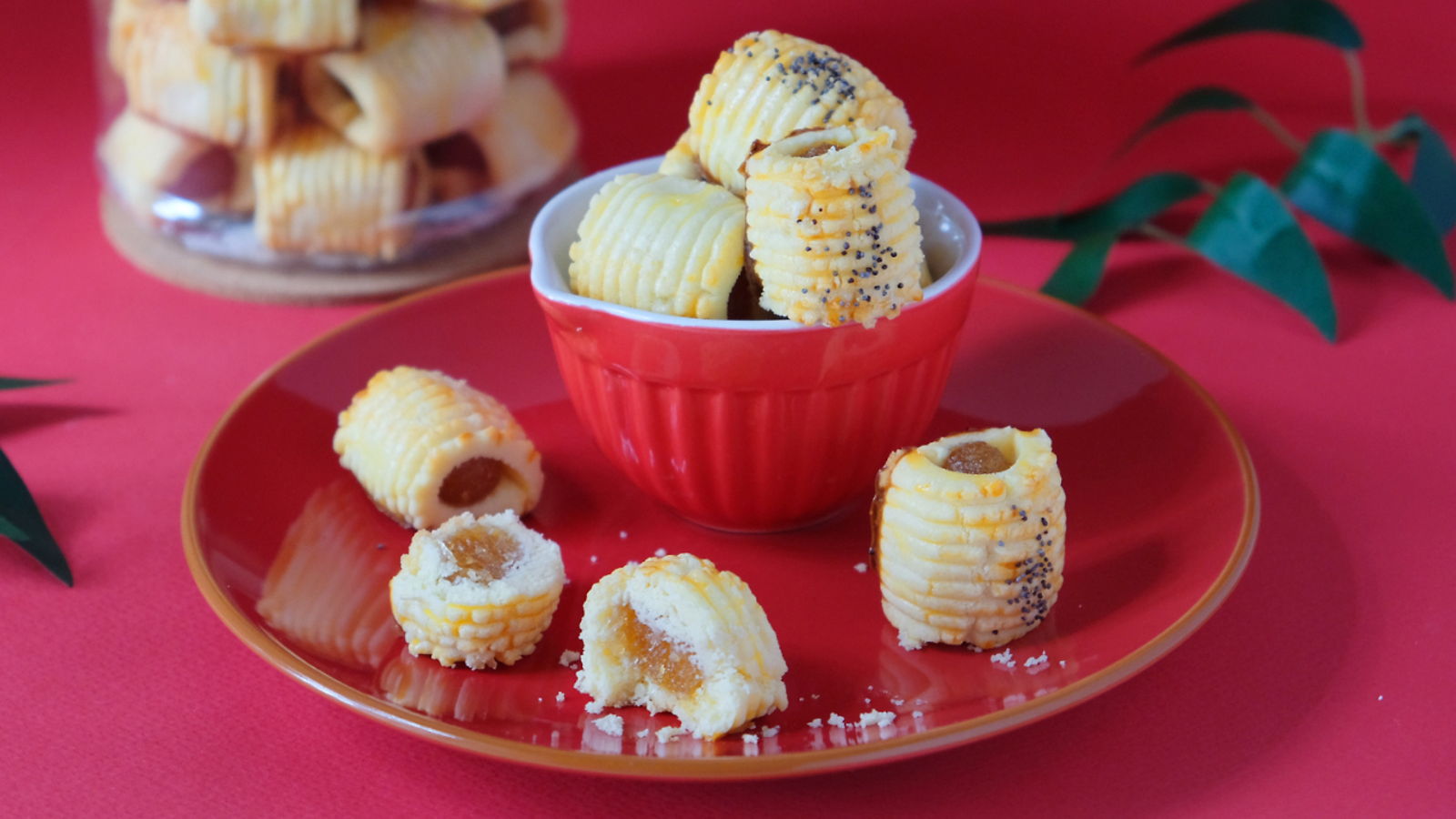Pineapple tarts by my mother is the best buttery, crumbly and melt-in-your-mouth version out there! She makes them every year and they are always the highlight at my home. Making these enclosed pineapple tarts may take a little more time but it's always so fun as the whole family is helping out with the process.
This recipe VS Nyonya pineapple tarts
Pineapple tarts come in many different shapes and sizes. Of course, there is also a difference in texture. The traditional Peranakan/Nyonya pineapple tarts we had previously shared is the type which is mainly found in the state of Malacca.
The pineapple tarts in this recipe is much more delicate as the dough contains butter and corn flour. Both ingredients make the dough softer and more crumbly. If you prefer the shortbread-like texture, the Peranakan/Nyonya pineapple tarts is the one for you. However, for a softer pastry, read and bake on!
Can only butter be used?
Of course! Butter does wonders to the mouthfeel because of its milk fat as it melts at a lower temperature compared to margarine which contains palm oil. While some may prefer the flavour of margarine, using it alone doesn't yield the same mouthfeel compared to when using butter. Some may even complained that margarine leaves a waxy feeling on their palate. Hence, using the recommended ratio helps with the taste and texture.
Where to buy pineapple jam?
Pineapple jam used for these tarts are usually sold in baking supply stores within Malaysia, Singapore, Indonesia or Taiwan especially when the festivities are approaching. They are rarely sold in other countries but you can make them using fresh or canned pineapples. Refer to the recipe here.
The jam should not be confused with the bread spread type of jam as it is not possible to shape.
Pineapple tart mould
The mould is usually sold in baking supply stores. If you are living in Australia, Europe or the US, try Amazon. Look out for the mould with a jagged pattern.
Why does the dough crack after baking?
It's important to have sufficient dough wrapping the pineapple jam. During the baking process, the dough will expand and if there isn't enough dough to seal them together, the jam will be left directly exposed when baking.
When the dough fully wraps the jam, it should look like the tart on the left. Having too little dough will result in a tart like what's on the right.
Never leave dough in the open
Shaping the dough can take a bit of time. Therefore, it's very important to work in batches and never leave the dough exposed to prevent it from drying. Cover the dough with a clean damp kitchen cloth instead.
The perfect egg wash
Egg wash is brushed on top of the tarts for the extra golden shine. To make the perfect egg wash, a pinch of salt must be added to the mixture as it helps break the egg protein and yields in a more even wash. Using milk instead of water encourages browning during baking. That's exactly the colour we would like to achieve on each tart.
Ingredients for decoration
Sprinkling additional ingredients on top of the tarts after brushing egg wash improves the aesthetics of the tarts and sometimes, giving a very light hint of savouriness which goes very well together with the sweetness of the tarts. Suggested toppings are poppy seeds, Parmesan cheese or dried herbs such as parsley or basil.
Tips to store pineapple tarts
Storing pineapple tarts are easy. To prevent them from turning mouldy, ensure that they have fully cooled to room temperature before stacking them in an air-tight container. Put the containers away from direct sunlight and they should last for about 1.5 months. Refrigerating them helps to extend the shelf life for up to 3 months. If you are keeping the cookies for so long, ensure to check if there is any mould before consumption. Anyway, I bet they will be long gone before that happens!

